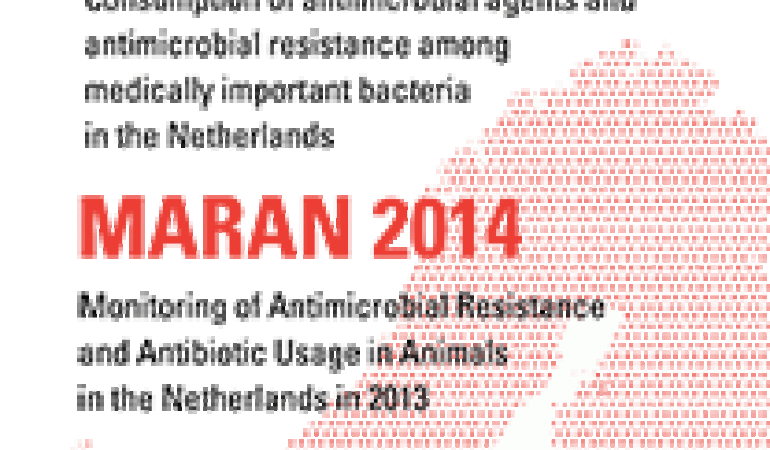
After continuing to rise for many years, in 2013 the prevalence of resistance to antibiotics levelled out somewhat in both hospitals and primary care. The sales of antibiotics for animal use have also fallen once again, indicating a reduction in use and, consequently, a lower risk of resistance. This has been shown by the annual NethMap/MARAN report. In order to control the increase and spread of antibiotic resistance it is necessary that trends in the use of and resistance to antibiotics be carefully followed by means of monitoring and checks. In order to continue and optimise the current package of measures, intensive collaboration between professionals in both the public and private domains is essential, both in human and in veterinary health care.
After years of increasing and a period of stabilisation over the last 2 years, in 2013 the use of antibiotics in humans fell from 11.34 to 10.81 DDD/1000 population). Also the total use of antibiotics in Dutch hospitals has decreased. However, there is a trend towards using more broad-spectrum antibiotics (these antibiotics are effective against a large number of different types of bacteria). Resistance to these commonly-used antibiotics, e.g. amoxicillin, is on the increase. Multi-resistant bacteria (bacteria that are resistant to several antibiotics) are increasingly being seen in complicated urinary tract infections. This is making it more difficult to effectively treat patients with these infections.
The frequent use of antibiotics in vulnerable groups, such as patients in hospitals and nursing homes, gives rise to an increased risk of infection by multi-resistant bacteria. This means that it is possible for these bacteria to spread within and between care institutions and sometimes even into the general population. In addition, the introduction of resistant bacteria from abroad also plays an important role in the spread of antibiotic resistance.
Important measures to control antibiotic resistance include the careful use of antibiotics, the meticulous application of hygiene measures, and monitoring. This is not only applicable in hospitals but also in nursing homes and general practices.
Veterinary sector
This year the sales of antibiotics for animal use dropped by 16 percent. Since 2009 sales have fallen by a total of 58 percent. This means that the target of a 50 percent reduction - set by the Ministry of Health, Welfare and Sport, and the Ministry of Economic Affairs in 2013 - has not only been achieved but exceeded. Consequently, there has been a general reduction in the occurrence of resistance in animal farming. Antibacterial substances critical to public health such as the fluoroquinolones and third and fourth generations of cephalosporins are used in livestock farming in only a very limited way. This has led to a reduction in the numbers of ESBL-forming bacteria found in the intestinal flora of farm animals (ESBL: a collective name for a group of enzymes that are made by bacteria and which are able to inactivate antibiotics). In 2013, carbapenems (ESBL variants that have led to incidental outbreaks amongst humans in health care in the Netherlands) were not found in animals or animal products. Active monitoring of these resistant bacteria, which are potentially dangerous to humans, remains advisable.
NethMap/MARAN report
The NethMap/MARAN report was drawn up by the Dutch Working Party on Antibiotic Policy (SWAB), RIVM Centre for Infectious Disease Control and the Central Veterinary Institute (CVI), part of Wageningen UR. This year marks the twelfth year of the publication of NethMap. This is the third time that human data from NethMap have been presented in conjunction with veterinary data from MARAN. MARAN has been monitoring the use of and resistance to antibiotics in the animal sector since 1998.